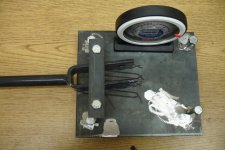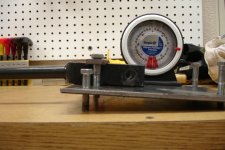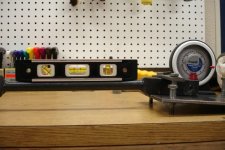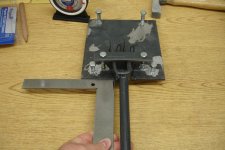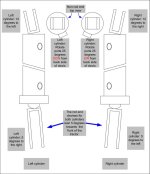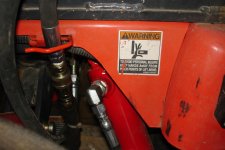jnjpream
Gold Member
Modify the cylinders, part 3. The side links get cut.
The side links aren't too bad. For the BX22 when using the bailey cylinders, when fully retracted, I just needed enough rod to keep from pinching stuff and give the welder enough room for the bead. I left 1/2 inch of rod total (see picture). There would be 1/4 inch ground off the side of it for the welder, and another 1/4 inch of untouched rod below the weld. You really don't want to go anything less than 1/4 inch between the weld and the seal because the heat from the welding will damage the chrome at least 1/8 inch below the weld which leaves only another 1/8 of good chrome. Not much..
If the OEM links were longer then I would have left more rod, but in this case the cylinders were an inch longer than the OEM links so shorter was better.
The new side links, once all put together using OEM sized clevis ends, left the total side link length 1 inch longer than OEM. It turned out to not be a big deal. And if I need to get that extra inch back there is enough clearance between the lower links and the top of the side link clevis ends that I can move the pin hole up an inch on the clevis end without any problems. I haven't found the need to do this though.
Next post is how to setup and jig for welding.
The side links aren't too bad. For the BX22 when using the bailey cylinders, when fully retracted, I just needed enough rod to keep from pinching stuff and give the welder enough room for the bead. I left 1/2 inch of rod total (see picture). There would be 1/4 inch ground off the side of it for the welder, and another 1/4 inch of untouched rod below the weld. You really don't want to go anything less than 1/4 inch between the weld and the seal because the heat from the welding will damage the chrome at least 1/8 inch below the weld which leaves only another 1/8 of good chrome. Not much..
If the OEM links were longer then I would have left more rod, but in this case the cylinders were an inch longer than the OEM links so shorter was better.
The new side links, once all put together using OEM sized clevis ends, left the total side link length 1 inch longer than OEM. It turned out to not be a big deal. And if I need to get that extra inch back there is enough clearance between the lower links and the top of the side link clevis ends that I can move the pin hole up an inch on the clevis end without any problems. I haven't found the need to do this though.
Next post is how to setup and jig for welding.
